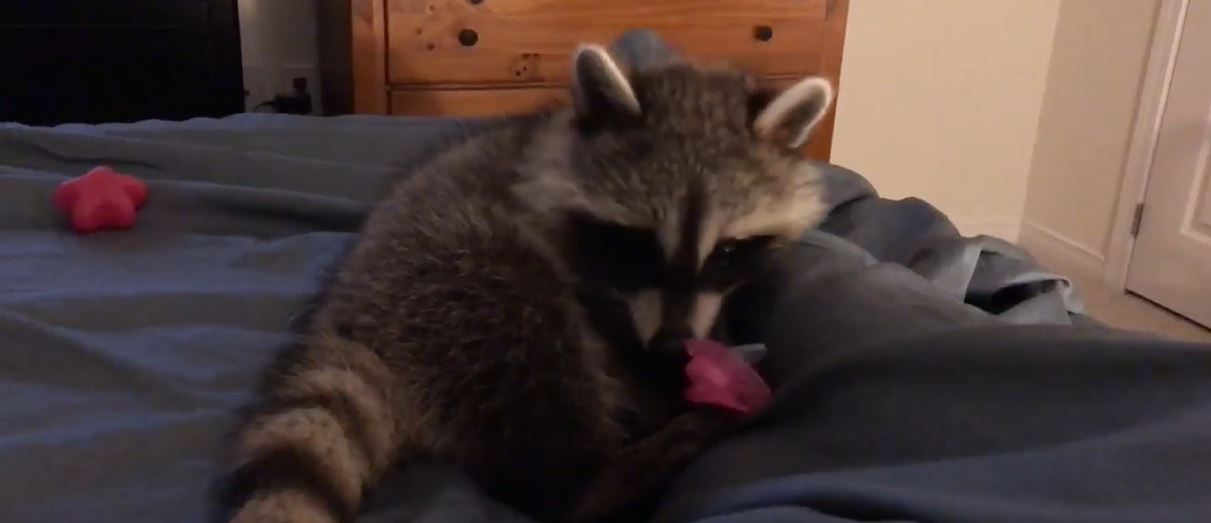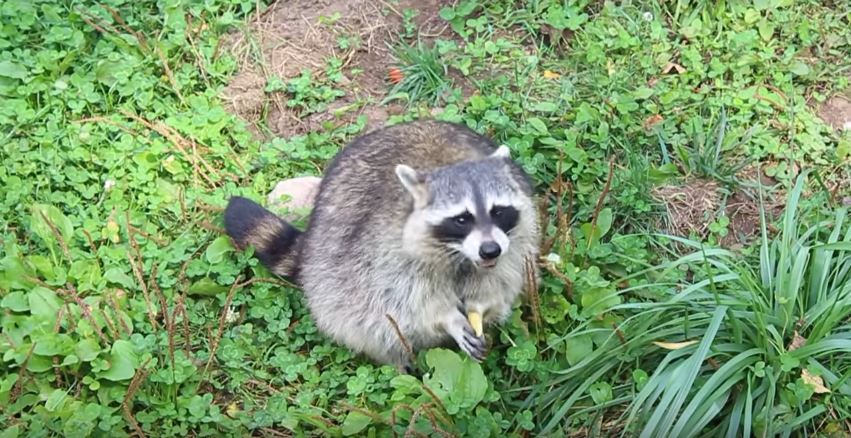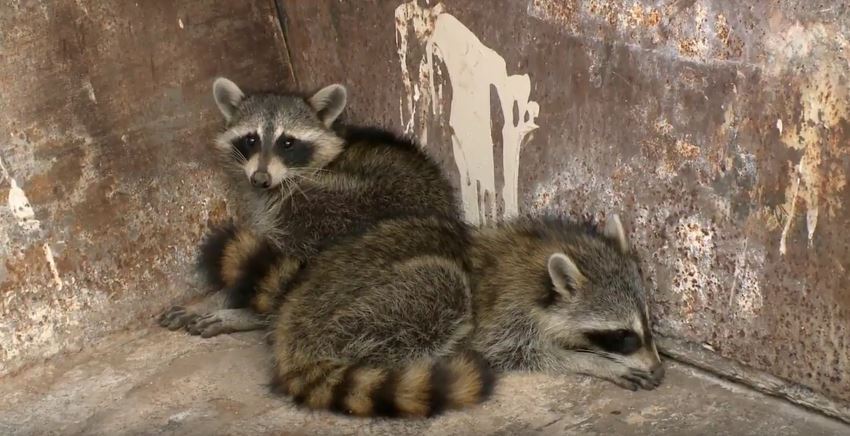How To Get A Raccoon Out Of Your Attic

If you have one or more raccoons in your attic, you will want to get them out as soon as possible. In addition to making a fair amount of noise and creating a bad smell, raccoons are also destructive and can damage your walls, insulation, cables, or any other part of your attic. The easiest way to get a raccoon out of your attic would be to hire a professional to help you, but it is also possible to do the job yourself, provided you have the right materials and a bit of time. Here are the basic steps you will need to follow.
- 1. Remove Temptation
- 2. Check For Young
- 3. Limit Access Points
- 4. Encourage Them To Leave
- 5. Trap And Release
- 6. Seal Final Holes
Each of these steps requires a bit more detail to fully understand how they work and successfully remove the raccoon from your home.
Remove Temptation
The very first step to getting a raccoon out of your attic is to take steps to make the environment less appealing for them. Things don't necessarily have to be within the attic to attract the raccoons; even items around the home may do so as the attic will give the animal ready access to the food source. This means that you should take the time to clean up garbage, fallen berries and other fruit, and pet food that is by your home. Make sure your garbage cans are tightly secured so the raccoons can't use them as a food source.
Check For Young
Before you start the actual process of removing the raccoon, you need to check for babies. Depending on the time of the year, there is a chance of up to 90 percent that you will find a litter including three to five baby raccoons. Take the time to go up to your attic and look for them. If you don't initially see the litter, sit still for a few minutes (up to a half hour) and wait to see if you hear or see them. It is possible to get raccoons out of your attic yourself when babies are involved, but it becomes more complicated as you will need to physically remove all the young yourself. This process will involve catching them while wearing thick gloves and avoiding the mother. As such, many people will simply hire a professional to complete the raccoon eviction if they find babies.
Limit Access Points
Next you will want to try to figure out how the raccoons are getting into your attic in the first place. Take the time to find their entry points and seal up most of them. If you can, try to figure out which is the main entrance for the raccoons, and select that one to leave open. At this point, if there are no baby raccoons present or the young are old enough to easily move by themselves, you can try an exclusion device, also known as a one-way door. These doors are designed to let wild animals out, but not back in so the next time the raccoon leaves, it will be gone for good. You should only use one-way doors, however, if there are no babies present or you are positive they are old enough. Because of this, many experts recommend that you leave exclusion devices to the professionals if baby raccoons are involved.
Encourage Them To Leave
Although you will see varying results with this step, you can try to humanely encourage the raccoons to leave your attic. Always pick a type of friendly harassment, beginning with smaller techniques. This can include using bright lights or loud noises or even unpleasant smells. While this step is worth a try, it will not always work as most raccoons won't leave a comfortable home because of a minor annoyance.
Trap And Release
If humanely encouraging the raccoons to leave or one-way doors don't work, you will want to try trapping and releasing the animals. Remember that if there are babies present, you will have to physically catch each one. After that, you can use a live cage trap to catch the mother raccoon; many experts even suggest placing the babies inside the cage as bait since the mother will never leave them alone. You can then move the raccoons from your attic and release them somewhere else. If you have already sealed up all the entry points, you can release them on your property; otherwise you may need to go further. Always check your local laws concerning trapping and releasing raccoons before doing this step.
Seal Final Holes
Once you are positive there are no raccoons in your attic, you want to double check that every possible entry point is sealed. This will prevent the raccoons from returning and stop other ones from taking their place. Never skip this step unless you are willing to deal with a repeat raccoon problem.
Will Repellents Get a Raccoon Out of The Attic?
What Should I Do if I Find a Nest of Raccoons in the Attic?
How Do You Know If You Have a Raccoon in Your Attic?
What Kind of Damage Do Raccoons Cause in an Attic?
How Do I Clean Raccoon Feces Out of My Attic
How Do I Know if There Are Baby Raccoons in the Attic?
Read the How to get rid of raccoons page for helpful information and to learn more about How To Get A Raccoon Out Of Your Attic
How to Get Raccoons Out of the Attic

Raccoons in your attic can be very worrying because they are very smart and can do a lot of damage to your home. Before you can remove raccoons from your home, you need to find where they are entering your home. Most times, you can find where the raccoons are entering your home by inspecting the outside of your house from their perspective. Raccoons look for dens, so any good sized hole can be a den.
Once you have found openings, you will need to determine which one is being used. Simply take newspaper and wad it up to fit the holes, and then leave the newspaper in the hole for 2 or 3 days. After a few days, check on the newspaper. If it is not disturbed and the weather has not been windy or stormy, no animals are using that hole as an entrance. If it has been moved, an animal is using it to get into your home.
Are There Babies?
Once you find out where they are getting in, you should try to find out if the unwanted guests are a mother raccoon with her young. If they are, the best thing that you can do is wait a month or two for the babies to grow old enough to leave their mother. Sometimes, the family of raccoons will leave on their own, once the young raccoons are old enough to survive on their own.
If you have a family of raccoons, you should not try to catch and relocate them yourself. This leads to separation of the family, and possibly the deaths of the baby raccoons. There are professionals who know how they can reunite a mother with her babies. This approach allows the mother to move her young to a new den on her own.
Humane Ways of Getting the Raccoons Out
If there are only adult raccoons in your home, there are ways that you can make the raccoons leave on their own. Most of the time, bright lights, unpleasant smells, and loud noises in and around their dens are enough to get raccoons to leave. The best time to use these techniques is right at dusk or during the night. Raccoons are mostly nocturnal, so they are more willing to move during the night.
One-Way Doors
One-way doors are used by some professional to get the raccoons out of your home, which is a method best used on older raccoons that do not have young. These doors allow the raccoons to leave your attic, but will not allow them back in your home.
Once the raccoons have left your home, your work is still not done. You then need to prevent the raccoons from returning, which means finding all the entries to your home and sealing them off. This should only be done once you are sure that there are not any raccoons still in your home. Most times, using heavy wire mesh and sheet metal are the best options for sealing entries to your home. You will also need to clean up any raccoon waste that is in and around your home.

If your house is close to wildlife or forests, it is very likely that you might end up hosting a wild animal at some point. Raccoons are the most popular animals that can be found in a house’s attic. They are so used to the human activity that they can actually live to your house without feeling scared or intimidated by you. It is most likely that you have heard a scratching noise or some walking footsteps that make you suspect of some intruders in your attic.
Many animals choose to live in an attic, from mice and rats all the way to bats and raccoons. Your attic is abandoned, dark and warm, everything that an animal needs in order to survive winter, and yes, even breed. The sooner you come to realize you have guests the better it would be in order to make them go away.
How to Get Rid of Baby Raccoons
Of course, no one wants to kill little innocent animals that just happened to ask for shelter into your house. However, no matter how cute you think they are, they can destroy your property and cause several problems within your house. The first step towards a raccoon – free attic is to find out whether the female raccoon has already made a nest to your attic.
If you find any raccoon babies to your attic, make sure their mother is not there and then take them and put them in a box or in a cage. First, you need to make sure their mother is nowhere to be found because if she is, it is very likely that she will try to protect her babies and attack you. However, the babies are very friendly and easy to catch so you can start from there.
Get Rid of the Mother
Now it is the most critical point because you have to place a trap or a cage exactly where her babies where. This way it will be easier to catch her and take her outside the house. Take her where her babies are. Perhaps you have the time to make them a new nest in order to feel safe and stop trying to enter attics. Take them to the forest and let them be free. She will figure things out.
Close Up the Entry Holes
This is a very important step that will help you have an empty attic, without risking having other raccoons in the future. Make sure you find all possible entry holes and lose them up really good. This will prevent any raccoon from entering your house as well as any other wild animal.
There are many great things about living in the countryside, but there are also some difficult parts that require your attention. Make sure you and your family stays safe and sound inside your house. Raccoons are beautiful animals that deserve to be free in the forests rather than trapped inside a house.

